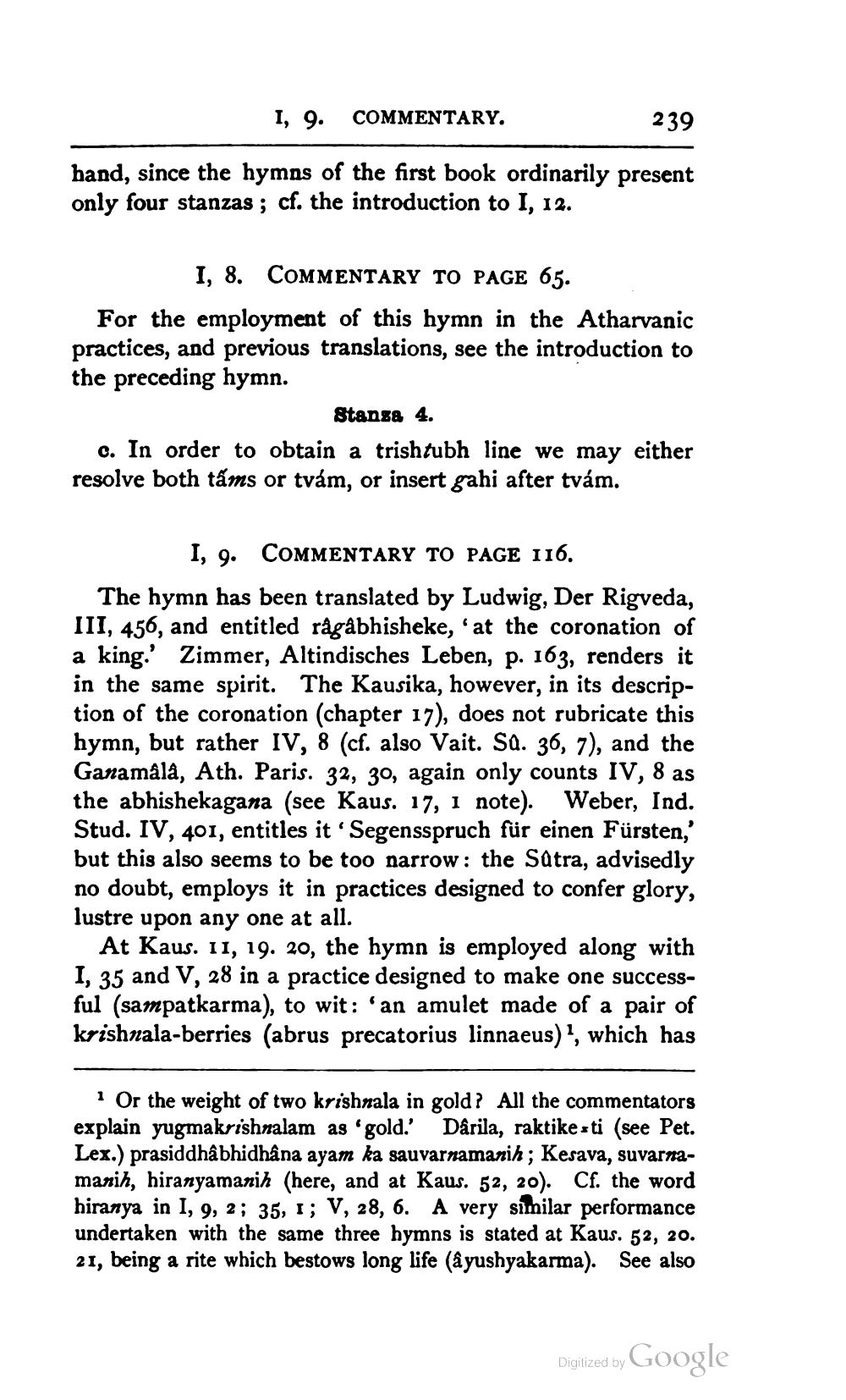________________
I, 9. COMMENTARY.
239
hand, since the hymns of the first book ordinarily present only four stanzas ; cf. the introduction to I, 12.
1, 8. COMMENTARY TO PAGE 65. For the employment of this hymn in the Atharvanic practices, and previous translations, see the introduction to the preceding hymn.
Stansa 4. c. In order to obtain a trishtubh line we may either resolve both tấms or tvám, or insert gahi after tvám.
I, 9. COMMENTARY TO PAGE 116. The hymn has been translated by Ludwig, Der Rigveda, III, 456, and entitled rågabhisheke, at the coronation of a king.' Zimmer, Altindisches Leben, p. 163, renders it in the same spirit. The Kausika, however, in its description of the coronation (chapter 17), does not rubricate this hymn, but rather IV, 8 (cf. also Vait. SQ. 36, 7), and the Ganamâlâ, Ath. Paris. 32, 30, again only counts IV, 8 as the abhishekagana (see Kaus. 17, 1 note). Weber, Ind. Stud. IV, 401, entitles it'Segensspruch für einen Fürsten,' but this also seems to be too narrow: the Satra, advisedly no doubt, employs it in practices designed to confer glory, lustre upon any one at all.
At Kaus. 11, 19. 20, the hymn is employed along with I, 35 and V, 28 in a practice designed to make one successful (sampatkarma), to wit: 'an amulet made of a pair of krishnala-berries (abrus precatorius linnaeus)', which has
1 Or the weight of two krishnala in gold? All the commentators explain yugmakrishnalam as 'gold.' Darila, raktikesti (see Pet. Lex.) prasiddhâbhidhâna ayam ka sauvarnamanih; Kesava, suvarnamanih, hiranyamanih (here, and at Kaus. 52, 20). Cf. the word hiranya in I, 9, 2; 35, 1; V, 28, 6. A very similar performance undertaken with the same three hymns is stated at Kaus. 52, 20. 21, being a rite which bestows long life (àyushyakarma). See also
Digized by Google




